The week after Christmas is always one of my favorites of the year. Deadlines have been met. Work doesn’t start up again for another few weeks. The pace of life slows. Usually we visit family in Texas, but not this year. Instead we’re looking at outings and excursions we can take from home.
We may put on coats and hats and drive out to visit the Festival of Lights at Powell Gardens, which runs through January 3, 2021. (They’re taking a break on New Year’s Eve and New Year’s Day). Now in its fourth year, the festival’s fanciful displays transform 25 acres of the gardens into a kaleidoscope of lights.
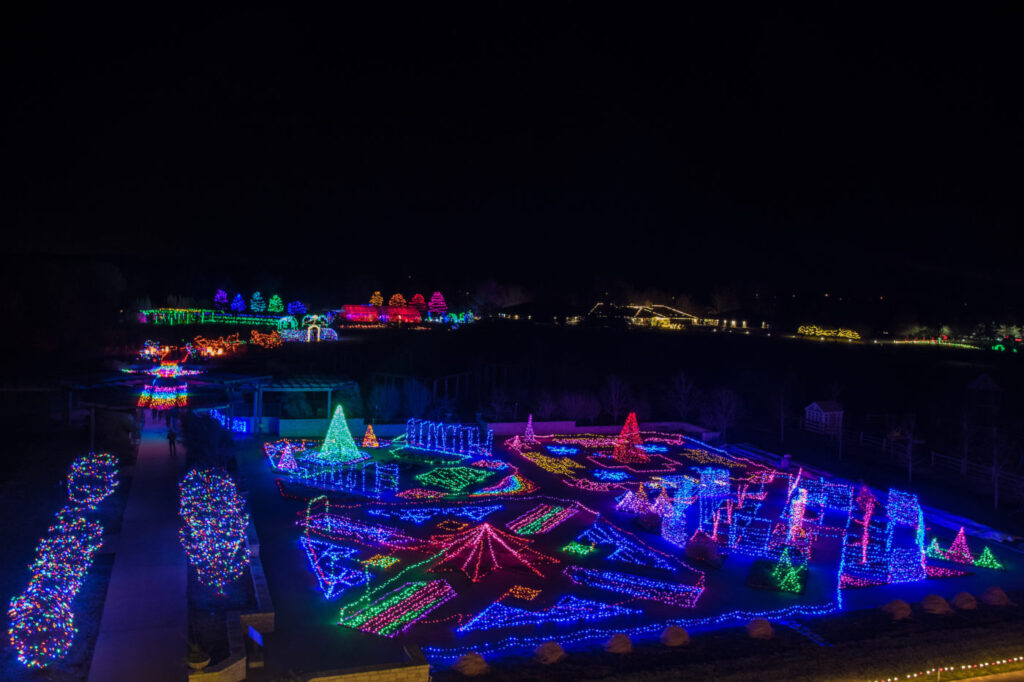
We went earlier in the season. We’re always looking for fun, safe things to do outdoors with our friends, and this was a perfect fit.
If the weather outside is frightful, a step into the conservatory’s holiday exhibit transports visitors to the tropics.
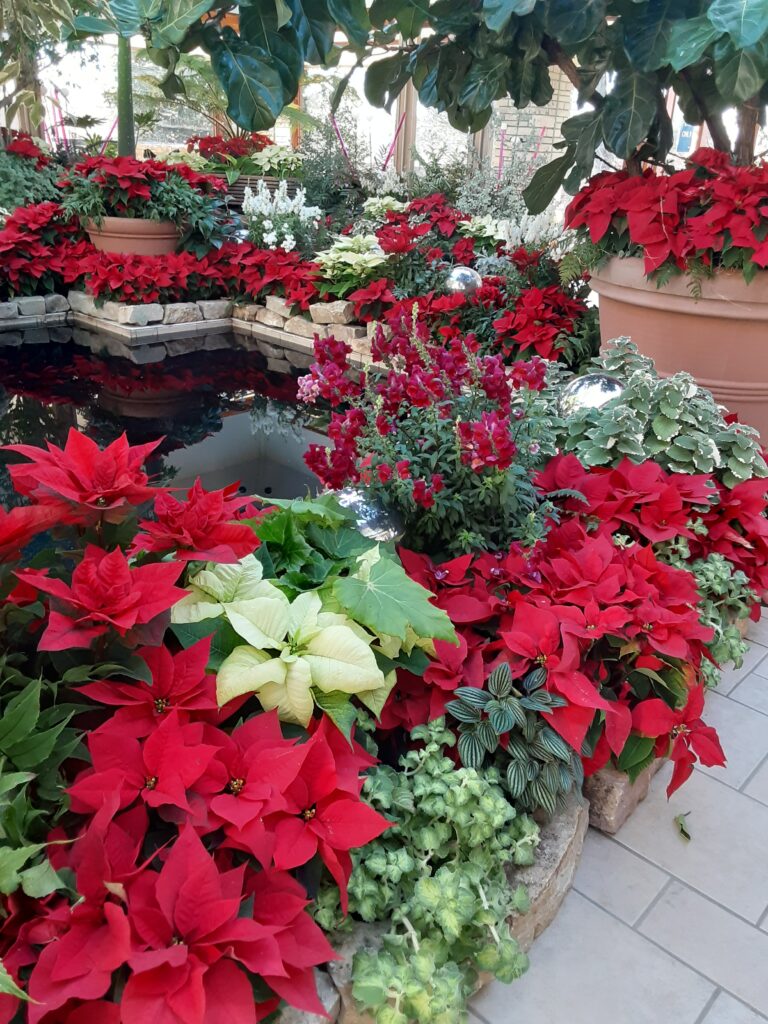
A holiday tradition since 1997, the 2020 display is one of the few of its type open to the public this year—perhaps the only one, as the orangery at the Kauffman Gardens remains closed because of COVID.
The conservatory is part of the Fay Jones-designed visitor’s center. Its pyramid-shaped glass roof is a prairie interpretation of a Victorian glass house, with a rectangular pool centered beneath the apex. The cheerful sound of the moving water stimulates all the senses.
The sight of so much color is bracing. According to horticulturist and designer Brent Tucker, this year’s exhibit contains almost 500 plants. Poinsettias of many colors and varieties crowd the beds, accompanied by snapdragons, Cuban oregano (coleus amboinicus), Dusty miller, eucalyptus, Pink anthuriums, soft ferns, and hundreds of others.
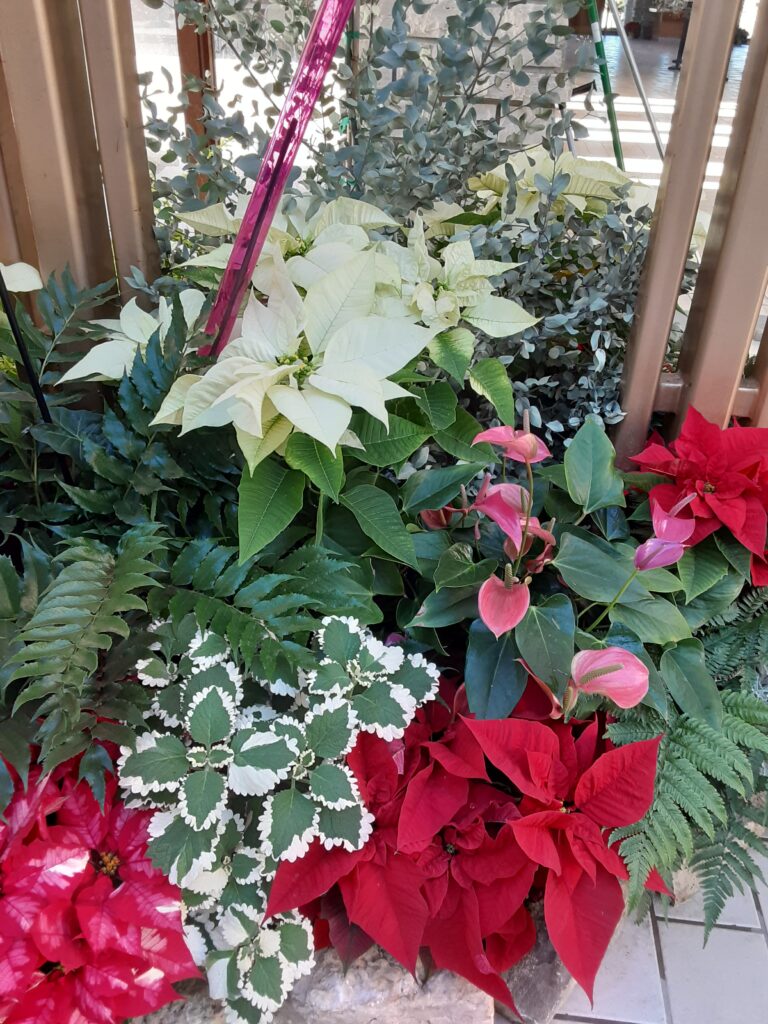
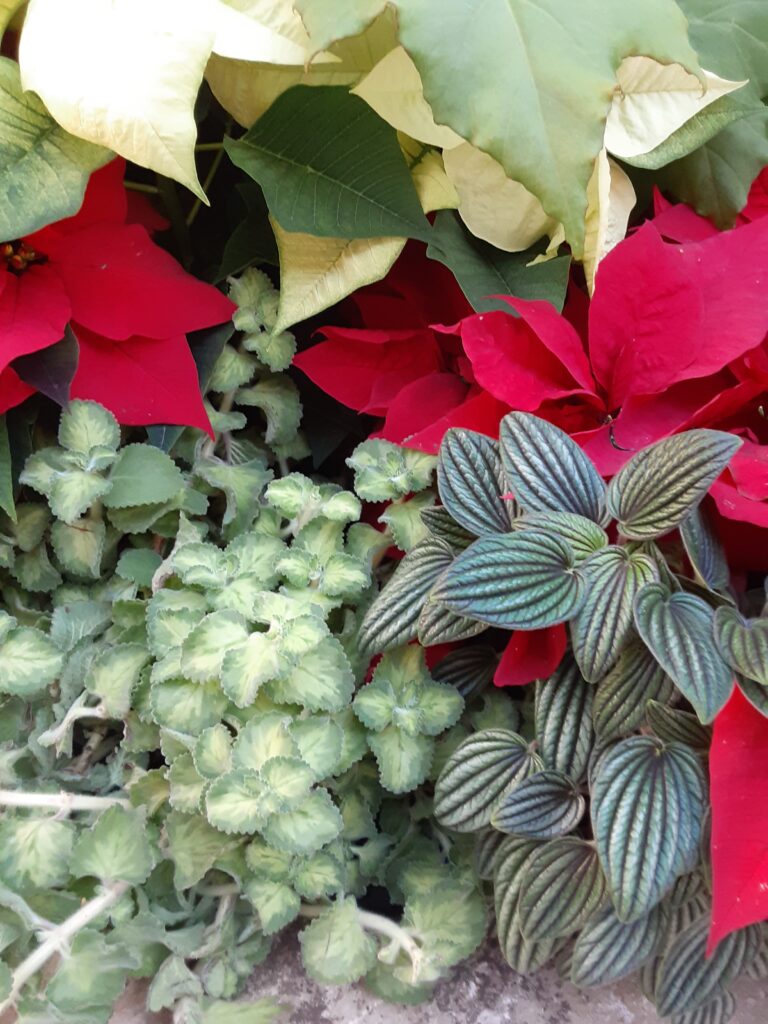
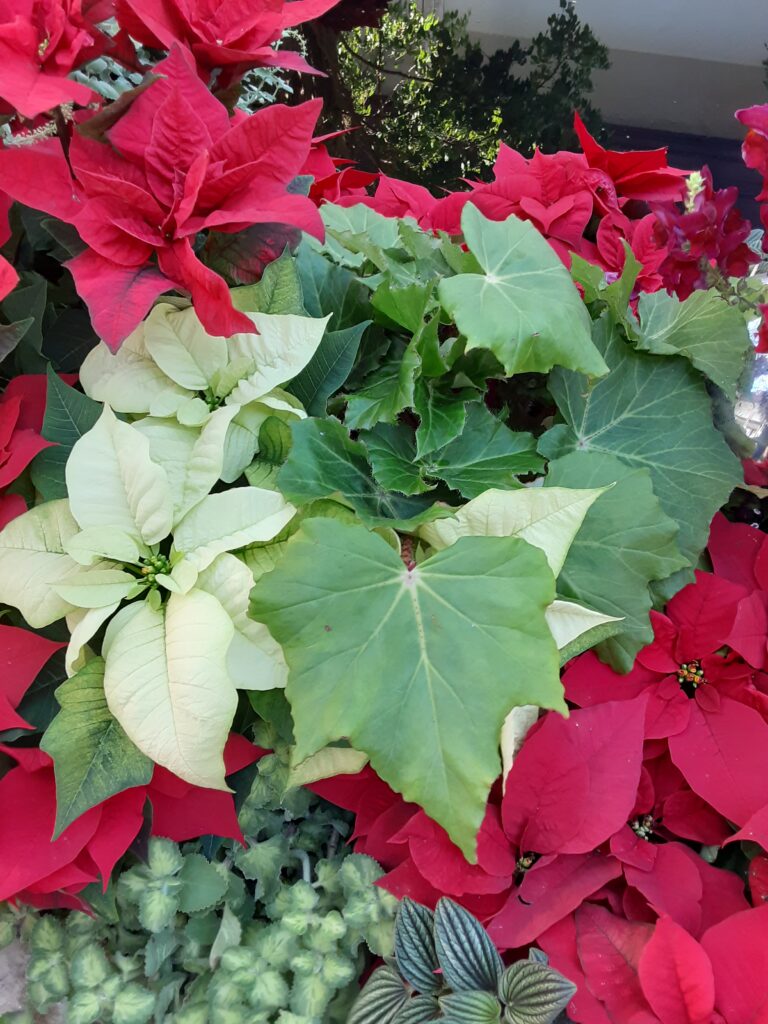
Conservatories are often living plant museums, showcasing plants from different environments. For example, the conservatory at the New York Botanical Garden has areas dedicated to rainforest, desert, aquatic, and carnivorous plants. In contrast, Powell Gardens’ holiday exhibit includes plants from all over the world that thrive under similar conditions. Tucker says that in a true conservatory, the plants would be in soil, but these are all in pots. This gives him flexibility to move things around, but he has to hide the pots and water each plant individually.
This is a lot of work. An enormous amount of care goes into keeping the display fresh and alive. Tucker keeps the humidity at fifty percent. Earlier in the season, warm temperatures outside heated the air inside, requiring constant adjustment. Like most houseplants, many of the tropicals in the display are sensitive to being moved, and react to the stress by dropping leaves or turning brown as they acclimate to the lower light and humidity levels. Tucker monitors their health to maintain the display’s lush, tropical feel.
Anchoring the display are four trees growing in enormous pots: a striking fiddle leaf fig (ficus lyrata); two large ficus, one green, the other variegated; and one of Powell Gardens’ most unusual plants, a rare Amorphophallus titanum, commonly known as titan arum, or corpse flower. Despite its appearance, this isn’t a tree at all.
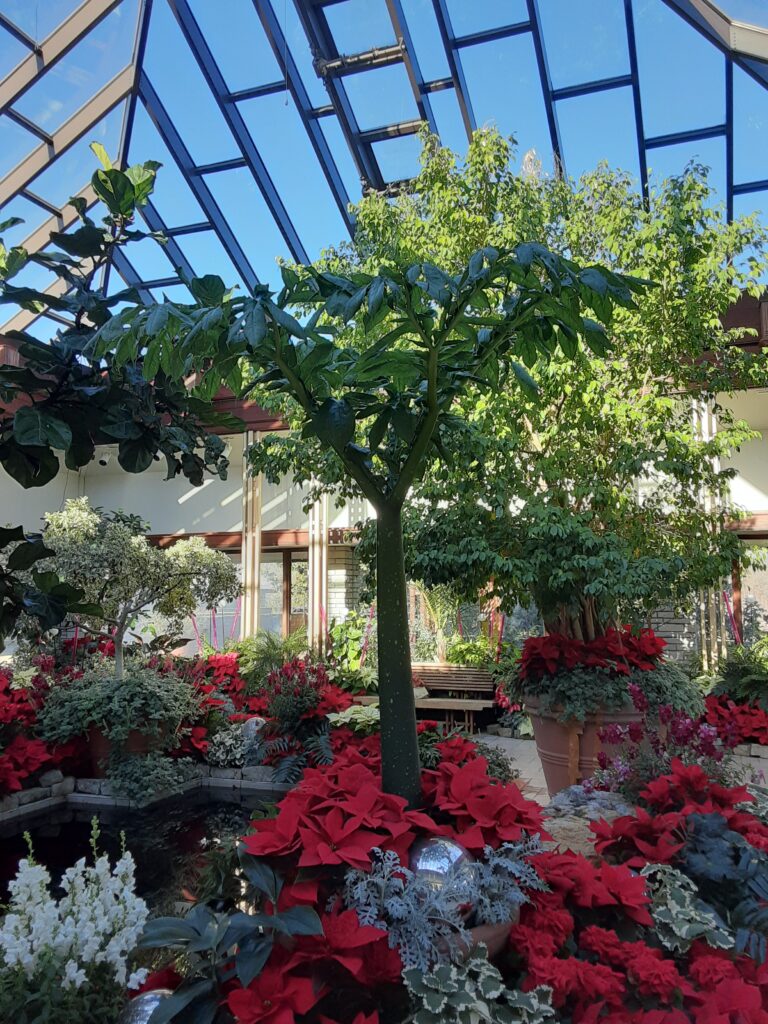
Only a few specimens of this unusual plant are in cultivation. Titan arum blooms rarely, at a frequency that’s hard to predict. Its striking flower, called inflorescence, emits a foul odor Tucker describes as “wretched, like rotting flesh.”
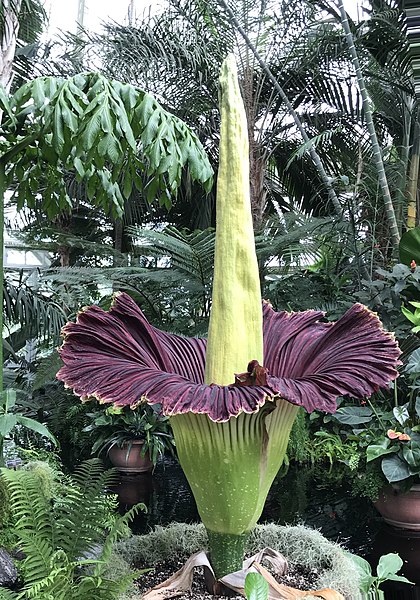
© wikimedia commons
“The plant hasn’t flowered for us yet,” Tucker says. “I hope within the next few years it will!”
I do too. As part of the holiday exhibit, it is on display in the conservatory during the Festival of Lights, which closes on January 3, 2021.
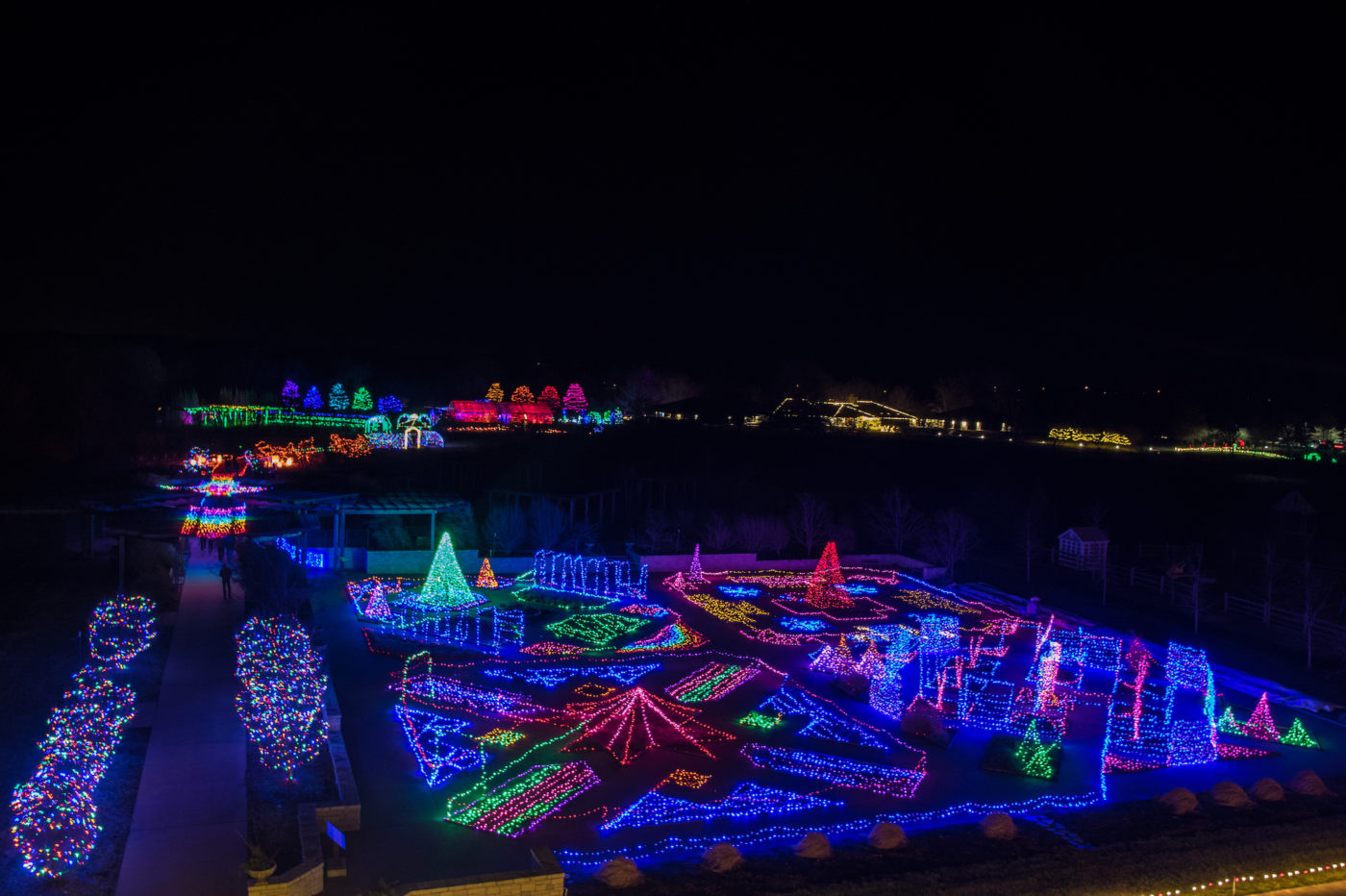
I really want to go! Looks so beautiful!
We had a great time when we went a couple weeks ago–especially the kids. The hot chocolate gets high praise, too.